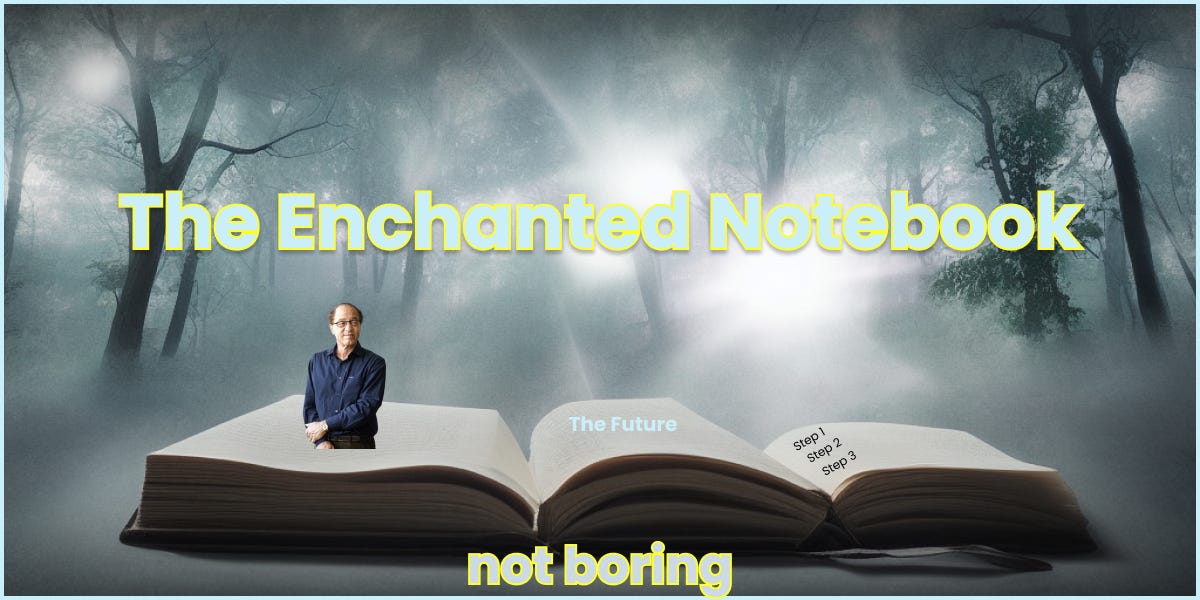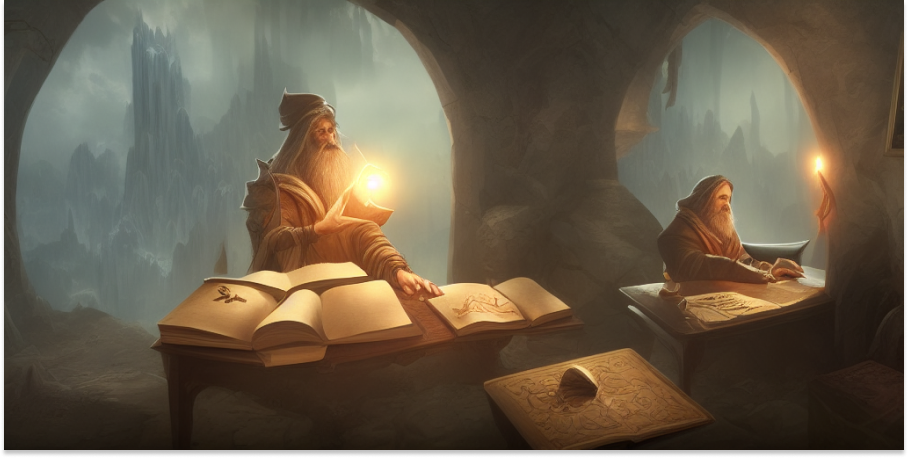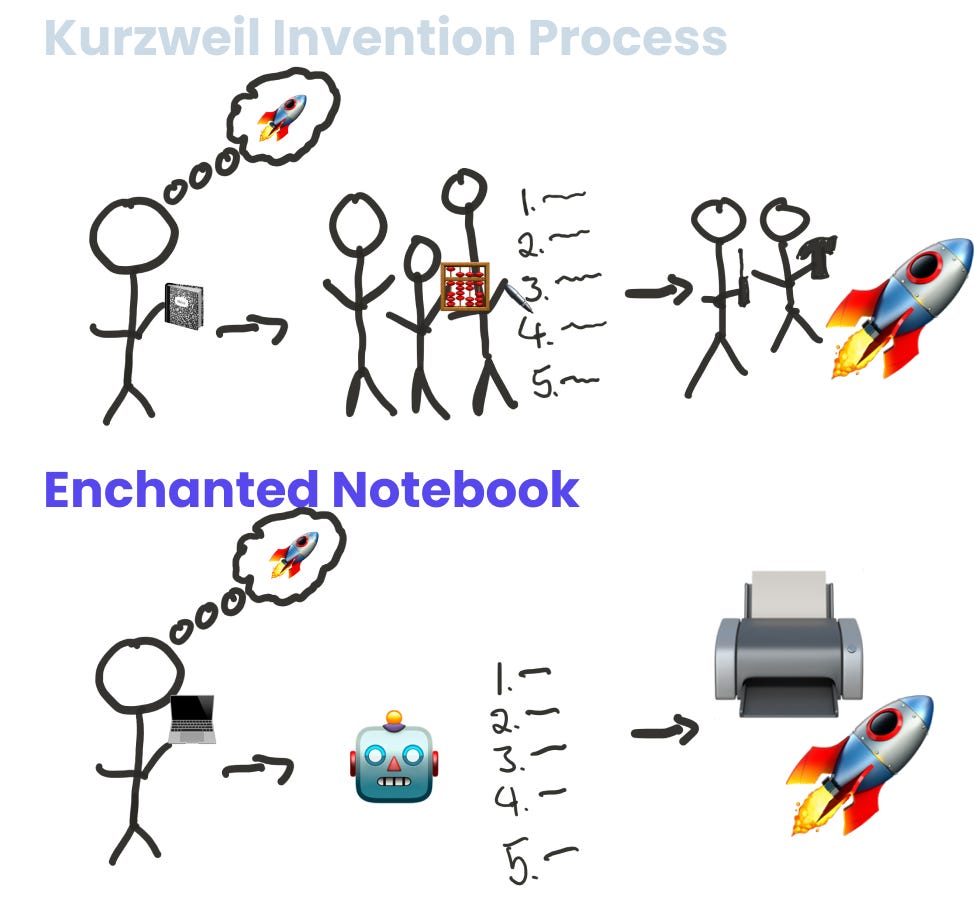Not Boring by Packy McCormick - The Enchanted Notebook
Welcome to the 1,184 newly Not Boring people 🤯 who have joined us since the last post I wrote in August — I need to take breaks more often! If you haven’t subscribed, join 154,543 smart, curious folks by subscribing here: 🎧 To get the essay right in your ears, listen on Spotify or Apple Podcasts Today’s Not Boring is brought to you by… Secureframe Secureframe is the leading, all-in-one platform for security and privacy compliance. Secureframe makes it fast and easy to get and stay compliant so you can focus on what matters: Scaling your business, customers, and revenue. With Secureframe, hypergrowth organizations can:
Plus, Secureframe helps sales teams respond to RFPs and security questionnaires quickly and easily with AI so they can close more deals, faster. Click here to set up a demo. Mention “Not Boring” during your demo to get 20% off your first year of Secureframe. Promotion available through October 31, 2022. Hi friends 👋, Happy Monday! This is my shortest piece in a long time — it all fits in the email — on a topic that’s near and dear to my heart: the real and growing power of writing down the future you want to see exist. Let’s get to it. The Enchanted NotebookImagine that, sitting at your desk on a normal Monday, a Monday just like today, a wizard pops into your office and hands you an enchanted notebook. “Write any idea in this notebook,” the wizard whispers, “and it will show you how to make it real.” The notebook is fantasy, but one very real way to create the future is to imagine what it looks like, write it down, and then work backwards. On Thursday, I was walking through Soho and life was good. I’d just grabbed coffee with one of my favorite entrepreneurs, the sun was shining after a morning shower, I had a box full of Little Cupcake Bakeshop cupcakes for Dev in hand, and I was listening to Lex Fridman interview Ray Kurzweil.
Kurzweil wrote one of the first books that got me really interested in technology, The Singularity is Near. Way back in 2005, my friend Nick, the same one who listened to Spotify on the party bus with me, told me I had to read it. And he was right. It blew my mind open. The whole interview was fascinating – Kurzweil’s brand of hyper-optimistic futurism is catnip to me. His superpower is believing harder than anyone else in the power of exponential curves. His 2001 essay, The Law of Accelerating Returns, is worth a read both for the ideas themselves and for how well many of his 21-year-old predictions have held up. In it, for example, he calls the timing of the paradigm shift in computing’s exponential growth (the shift from CPUs to GPUs, from Moore’s Law to Huang’s Law) in the 2010s, and the precipitous declines in the cost of human genome sequencing. Those ideas, and the idea of the Singularity, were so ahead of their time and out there that they’ve invited criticism from a host of Very Smart People. On the one side are experts, who understand the day-to-day difficulties of actually making Kurzweil’s predictions come true; on the other is Kurzweil, who looks at the curves and trusts that they’ll continue. Time will tell which side is right, and he’s missed on some predictions in the interim. But in the conversation with Fridman, Kurzweil makes a compelling argument that the consensus view on the timeline for artificial intelligence is coming back around to the timeline that he put forth in 1999, and has held to since: pass the Turing Test in 2029, Singularity in 2045. If Kurzweil is right, or even close to right, he may go down as the person with the greatest ability to predict the future in human history. So when Fridman asked Kurzweil about how he comes up with his ideas, I stopped walking, paused, rewound, and focused. Here’s the video, starting at the relevant point: 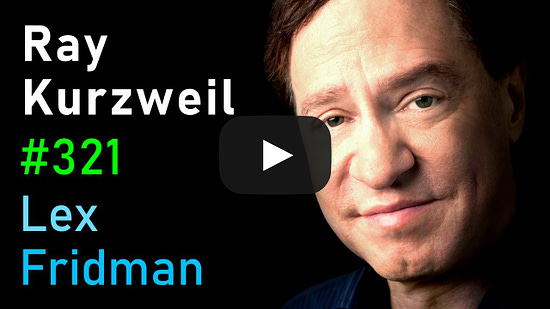 I transcribed the key part here:
The way Kurzweil describes it, innovation is half storytelling. It’s our Enchanted Notebook, just with humans filling in the enchanted bits for now. Write a speech, or a story, about the thing you want to create or the future world you want to inhabit. Paint that world in detail so rich, using the present tense, that it feels like you already live there. Imagine the magical technology that has become so ordinary that people just use it every day without a second thought. How do people behave in this world? What’s changed about them? What’s stayed the same? Then, reverse engineer it. What components go into that technology? When will which pieces be technically feasible? What machines need to exist to manufacture the technology? Where did you need to work with regulators to make sure people were allowed to use it? What will the unit economics look like? Which cost curves had to keep falling exponentially for those unit economics to make sense? How did they improve with scale, and which distribution channels did you use to sell the product? Kurzweil’s process is reminiscent of Amazon’s Future Press Release. When teams at Amazon proposed a new product, Jeff Bezos made them write a press release from the perspective of specific time in the future at which the product has been released and goals have been accomplished. Former Amazon exec John Rossman laid out the four rules for future press releases:
In either case, Amazonian or Kurzweilian, the process of bringing a new thing to life requires a combination of dreams and details, in three parts:
When I heard Kurzweil describe his process, I went through three emotional states:
I wonder how far off we are from the Enchanted Notebook: the point at which technology eliminates, or dramatically shrinks, the gap between imagination and reverse engineering. And from there, how much further we are from the point at which technology eliminates, or dramatically shrinks, the gap between reverse engineering and execution. One way to think about the Singularity is the point at which human-computer combinations do all three steps, pretty much in real-time, and carry out the execution with nanobots or something. But far before that point, it seems like we should be able to dream up those products, write them down, and let AI do the reverse engineering. Last week, Replit CEO Amjad Masad tweeted something to that effect: Caveats abound. Replit’s GhostWriter is still in beta and only helps humans write code. It can’t turn problem into product on its own yet, and that seems like a big bridge to cross. Plus, software engineering is likely an easier problem for AI to solve from a text input than mechanical engineering, if only because the amount of public code available to learn on is much larger than the amount of public CADs available, especially for sufficiently advanced designs, and is likely easier for AI to make sense of. And AI-assisted coding isn’t solving the kind of novel problems that AI-assisted physical product innovation would need to solve to be really magical. And and, there are likely a thousand things that I’m not thinking of here that make this harder than it seems to a non-technical, optimistically-minded person like me. BUT it seems almost certain that we’ll reach a point in the coming decades at which I’ll be able to write, “Single-person spacecraft capable of launching 500 pounds into orbit and sustaining life for up to six months” or whatever and get back a reverse-engineered CAD file, instruction set, and materials list with prices and suppliers. If the idea isn’t feasible yet, it might return a list of bottlenecks with best-guesses for when they’ll be solved, and all of those bottleneck lists might serve as a smorgasbord for researchers and entrepreneurs looking for big problems to solve. All of this seems infeasible and outlandish in the present. This current wave of AI innovation is creating a hype cycle, as every exciting technology does, and the reality likely won’t live up to the hype for a little while:  Michael Dempsey thinks we’re in the Curiosity Phase, past the Peak of Inflated Expectations and Trough of Disillusionment, exciting enough to lure people in while still being a really difficult spot in which to build an AI-powered company.
But let me dream for a minute. It is moving really fast. Last Monday, I wrote “We’re one small leap – some enterprising young coder hooking Stable Diffusion up to a voice input – from being able to speak words to conjure magic, incantation brought to reality.” On Wednesday, two days later, OpenAI released and open sourced Whisper, which will make it easier to make incantation real.  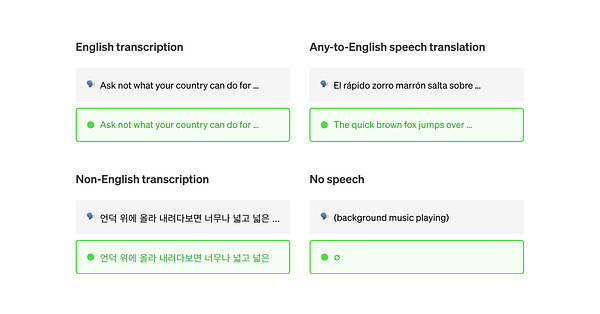 Friday morning, I spent time manually transcribing that Lex Fridman - Ray Kurzweil exchange. Friday afternoon, @jeffistyping dropped Youtube Whisperer, which uses Whisper to create transcripts from YouTube videos with Hugging Face. I know that I didn’t write those things into reality, but it certainly felt like it. Kurzweil has an explanation for the hype cycle, too. In The Law of Accelerating Returns, he pointed out that exponential curves feel linear and flattish in the moment, until they don’t:
Another way to view the Singularity is the point at which the short-term/long-term mismatch disappears, because the gap between idea and execution disappears. Whether the Singularity is near or not, it seems useful to try to shrink the mismatch by dreaming big about the future but making sure to fill in the necessary details. Very few people are great storytellers and great engineers, but AI might be able to help each side get better at the other. Engineers can run the details through GPT-3 and get a story. Storytellers can write the story into RevEng-4 (or whatever OpenAI calls it) and get the reverse-engineered details. Dreams and reality will move ever closer to each other. Whether that future is two months, two years, or two decades away, or whether it never comes, a good proximate next step on any timeline is for more people to paint rich, detailed visions of the future that they want to see come true. Imagination isn’t sufficient for creating the future, for now, but it is necessary. Thanks to Dan and Puja for editing, and to Secureframe for supporting Not Boring! We’ll be back to you on Thursday with a Deep Dive on one of the most sneaky successful startups out there. Until then, have a great week! Thanks for reading, Packy If you liked this post from Not Boring by Packy McCormick, why not share it? |
Older messages
Weekly Dose of Optimism #13
Friday, September 23, 2022
Adnan, Incarcerated Coders, NEPA Changes, The Lithium Beat, Breakthrough Prizes, Extinct Influenza
Indistinguishable from Magic
Monday, September 19, 2022
Magical Technology: iPod, Spotify, Figma, AI Art, Arc, web3, and beyond
Weekly Dose of Optimism #12
Friday, September 16, 2022
Goalkeepers, Child Poverty, The Merge, Repurposed Power Plants, Giving It All Away
The Founder's Letter: Trevor Dryer & Miles Halady, Carbon Title
Thursday, September 15, 2022
Helping Builders Build More, Cleanly
Working Harder and Smarter
Monday, September 12, 2022
Or why more energy + software = progress
You Might Also Like
Weekly Dose of Optimism #133
Friday, February 28, 2025
Pancreatic Cancer Vaccine, Restoring Hearing, Loyal, Atlas, Apple, Coinbase, Lunar Landers ͏ ͏ ͏ ͏ ͏ ͏ ͏ ͏ ͏ ͏ ͏ ͏ ͏ ͏ ͏ ͏ ͏ ͏ ͏ ͏ ͏ ͏ ͏ ͏ ͏ ͏ ͏ ͏ ͏ ͏ ͏ ͏ ͏ ͏ ͏ ͏ ͏ ͏ ͏ ͏ ͏ ͏ ͏ ͏ ͏ ͏ ͏ ͏ ͏ ͏ ͏ ͏ ͏ ͏ ͏
VC valuations feel the pressure
Friday, February 28, 2025
AI prompts record VC funding; Kindred Ventures' Steve Jang on AI wearables; Stripe hits $91.5B valuation Read online | Don't want to receive these emails? Manage your subscription. Log in The
Standing on the other side of goodbye
Friday, February 28, 2025
Little moments that make me question: have I moved away or come home? ͏ ͏ ͏ ͏ ͏ ͏ ͏ ͏ ͏ ͏ ͏ ͏ ͏ ͏ ͏ ͏ ͏ ͏ ͏ ͏ ͏ ͏ ͏ ͏ ͏ ͏ ͏ ͏ ͏ ͏ ͏ ͏ ͏ ͏ ͏ ͏ ͏ ͏ ͏ ͏ ͏ ͏ ͏ ͏ ͏ ͏ ͏ ͏ ͏ ͏ ͏ ͏ ͏ ͏ ͏ ͏ ͏ ͏ ͏ ͏ ͏ ͏ ͏ ͏ ͏ ͏
A New EBITDA Adjustment to Drive Business Selling Price (a short video)
Friday, February 28, 2025
THE EXIT STRATEGIST A New EBITDA Adjustment to Drive Business Selling Price (a short video) Click Here to Watch Our Short Video The Key to driving strategic value in the sale of a technology company is
The Daily Carnage Show 🎙️
Friday, February 28, 2025
Podcast inside.
"Notes" of An Elder ― To Dispense Love (A Special Gift Just for You Inside)
Friday, February 28, 2025
Love is the most powerful force we possess.
What it takes to get paid by YouTube, TikTok and other social platforms
Friday, February 28, 2025
Digiday has the lowdown on which platforms are offering what revenue share models and creator funds. February 28, 2025 PRESENTED BY What it takes to get paid by YouTube, TikTok and other social
🔔Opening Bell Daily: Testing US exceptionalism
Friday, February 28, 2025
US equities are under-performing the rest of the world to start 2025.
Guest Post: The NCAA's eligibility rules may be in serious legal trouble. Here's why:
Friday, February 28, 2025
One legal expert thinks that "bad facts could lead to a bad law". And it's the NCAA's fault.
Meet Your NEW AI Co-Pilot: Ember
Friday, February 28, 2025
It's pre-trained on tons of ClickBank products... View in browser ClickBank Have you heard of Ember, ClickBank's premier AI copilot? Simple, effective, and built to fuel your business, Ember is

